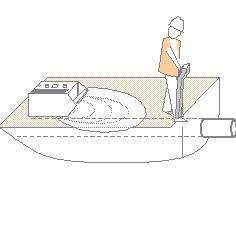 Because of the development of science and technology, the density of underground pipelines is getting larger and larger, and the detection of these pipelines depends on underground pipeline detectors. However, how should one choose underground pipeline detectors?
Because of the development of science and technology, the density of underground pipelines is getting larger and larger, and the detection of these pipelines depends on underground pipeline detectors. However, how should one choose underground pipeline detectors? The underground pipeline detector can quickly and accurately detect the position, orientation, depth of the underground water pipes, metal pipes, cables, and the location and size of the damage points of the steel pipeline coating without destroying the ground cover. Therefore, it has been widely used in water companies, gas companies, railway communications, industrial and mining, infrastructure, and other areas, the transformation of underground pipelines, maintenance, census and so on.
At present, underground pipeline detectors are basically divided into two types: a pipeline detector that uses the principle of electromagnetic induction detection and a pipeline radar that uses electromagnetic waves to detect. The choice of underground pipeline detectors needs to be based on actual conditions, considering actual factors, and then making decisions.
At this time, you need to understand your own needs, such as the scope of the pipeline instrument, test methods and functions. Generally, it is possible to select a pipeline instrument that is easy to operate, has an intuitive interface, and whose detection ability meets the requirements of its own application. In addition, it is also necessary to consider whether the attachment configuration is complete, whether the instrument can be upgraded, and whether it is compatible.
Express Rail Parts,High Speed Rail Accessories,Ductile Iron Grouting Sleeve,A Steel Bar Connector
Hebei Jingxian Jinli Casting Co. LTD , https://www.hbjinlicasting.com